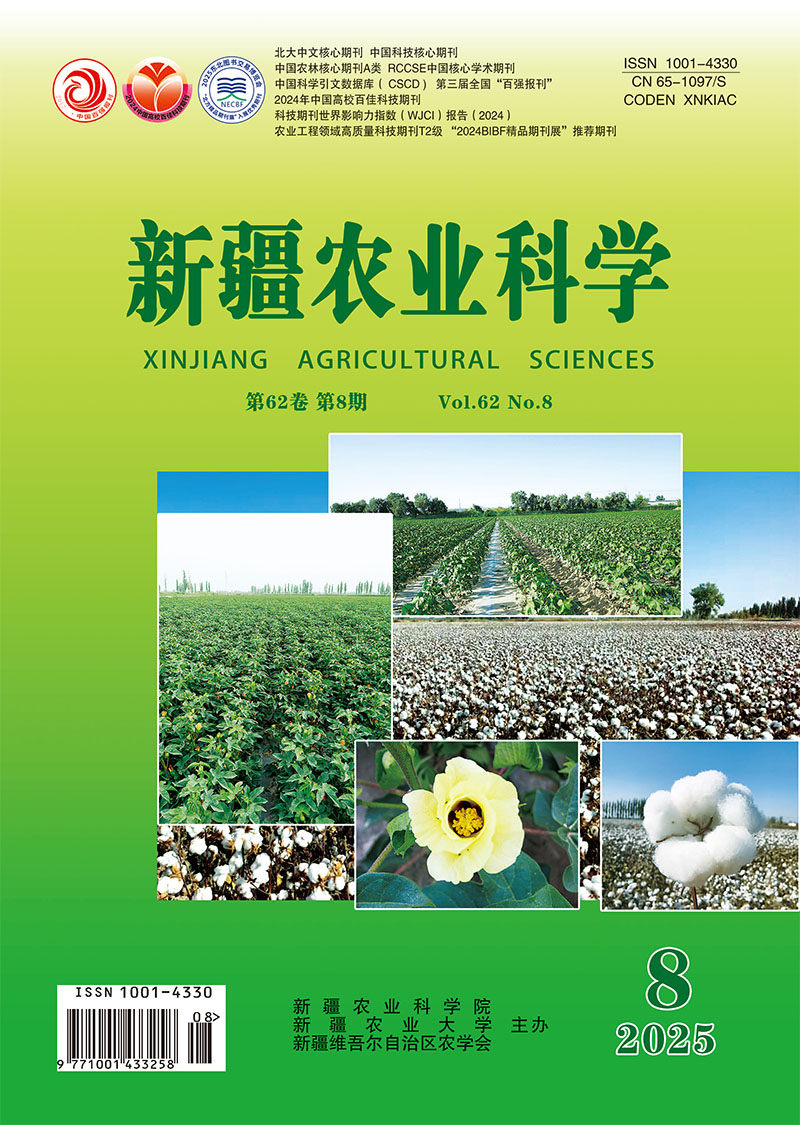|
|
Analysis of effects of water and nitrogen timing on cotton root morphological characteristics and yield formation
LI Yujiang, LIN Tao, ZHANG Pengzhong, CUI Jianping, GUO Rensong, LI Qianwen, TANG Qiuxiang
2025, 62(8):
1892-1906.
DOI: 10.6048/j.issn.1001-4330.2025.08.008
【Objective】Root is the main part of crops to absorb water and nutrients. Reasonable water and fertilizer management is crucial to the development and function of roots, and a key strategy to improve crop productivity and sustainability. This project aims to reveal the regulation mechanism of irrigation and nitrogen application timing on cotton root morphology and yield formation, optimize root health and crop growth soil environment.【Methods】The effects of different water and nitrogen timings on root morphology, root shoot ratio and yield formation of cotton were simulated by soil column under full irrigation(450 mm, no stress CK, W1) and deficit irrigation(225 mm, severe deficit, W2). The different water and nitrogen timings were divided into three stages according to the equal time interval of each irrigation process, and the nitrogen application amount was added to a certain period or all periods. The treatment was(A: 100 % N was dripped in the later period; B: WN uniformly mixed drip; C:100 % N in the middle ; D : 100 % N in the anterior segment ).【Results】 80.10%-91.58% of the root biomass was distributed in the 0-40 cm soil layer, which was the area where the root morphology of cotton was easily affected by the timing of nitrogen application. Under W1 treatment, compared with A(CK)treatment, B, C and D treatments significantly reduced root biomass by 5.10%, 3.96% and 9.98%, and mainly reduced root biomass in 0-20 cm. The advance of nitrogen application time increased deep root biomass. Among them, C treatment significantly increased root length and surface area in 0-40 cm soil layer, and significantly reduced root average diameter and root shoot ratio. Its yield, water use efficiency and nitrogen partial productivity increased by 8.22%, 7.31% and 5.86 %, respectively. Under W2 treatment, compared with A(CK)treatment, the root biomass of B, C and D treatments increased significantly by 19.80%,5.19% and 10.13 %, respectively, and the root-shoot ratio decreased significantly in advance of nitrogen application time, but the seed cotton yield, water use efficiency and nitrogen partial factor productivity did not increase significantly.【Conclusion】Water and nitrogen timing has a certain effect on root morphology, root-shoot ratio, yield, water and nitrogen use efficiency. When the irrigation water is sufficient, the middle nitrogen application can be used, which is beneficial to optimize the root distribution in the 0-40 cm soil layer, increase the root length and surface area, strengthen the root absorption of water and nitrogen in the deep soil layer, reduce the root-shoot ratio, and improve the water use efficiency, nitrogen partial productivity and yield. When irrigation water is scarce, water and fertilizer should be mixed and dripped, which is conducive to the uniform distribution of nitrogen fertilizer in the soil layer, promoting root absorption, easily forming a strong root system, and improving the resistance of cotton.
|

